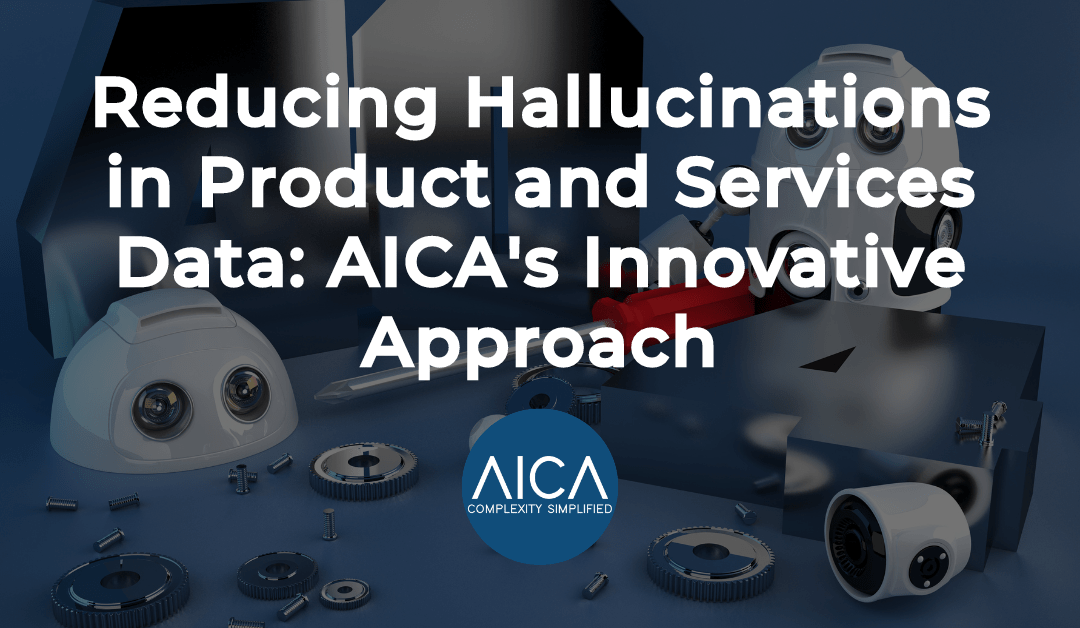Large Language Models (LLMs) have been a game-changer in text data processing and interaction. However, the emergence of these sophisticated AI tools has not been without its challenges.
A significant concern is their tendency to generate hallucinations—false or misleading content. Addressing this issue head-on, AICA, specialising in AI-driven data management, has introduced cutting-edge strategies to minimise hallucinations in product and services data, ensuring outputs remain reliable and grounded in reality.
Training LLMs on Real-World Data
Our primary strategy involves training our LLMs on authentic, non-synthetic data. This approach diverges from the traditional generative models that synthesise new data samples.
By relying solely on pre-existing real-world data sources, we significantly reduce the likelihood of our models producing inaccurate or entirely fabricated content. This commitment to real-world data underpins the reliability of our LLM outputs, ensuring they reflect accurate and verifiable information.
Implementing Visual Verification Through Color-Coding
To enhance the reliability of data corrections further, we pioneered a visual verification method. By applying colour-coding to modifications within product data-ranging from spelling corrections to anomaly corrections and beyond-users can quickly and easily understand the nature of the changes made.
This intuitive system serves dual purposes: it not only allows for rapid identification and understanding of data corrections but also aids in the detection and resolution of discrepancies or inconsistencies within the dataset.
Introducing Reliability Scores
Complementing the colour-coding system, we offer reliability scores for each data correction. These scores provide a quantifiable measure of confidence for each change, assisting users in evaluating the precision of corrections. The integration of colour-coding with reliability scores furnishes users with the tools necessary to make informed decisions about accepting or rejecting proposed modifications, thereby enhancing the dataset’s overall integrity.
Advantages of AICA’s Methodology
Our innovative approach to reducing hallucinations in product and services data brings several key benefits:
- Increased Accuracy: The use of non-synthetic data for training models ensures outputs are more reliable and reduces the risk of hallucinatory content.
- Improved Transparency: The colour-coding and reliability scoring systems enhance transparency, making it easier to track and understand modifications to the dataset.
- Streamlined Decision Making: These tools enable users to quickly evaluate and make decisions regarding suggested changes, streamlining the data cleaning process.
- Enhanced Error Detection: The visual verification process simplifies the identification and correction of errors and inconsistencies in the dataset.
Conclusion
By leveraging non-synthetic data and introducing user-friendly tools such as colour-coding and reliability scores, we further empower our users to enhance the accuracy and credibility of their datasets.
This approach marks a significant step forward in the quest for reliable AI-generated content, setting a new standard for data management solutions.
To find out more about our services and SaaS platform-please visit our website here.
References
1. ResearchGate: “Large Language Models: Applications, Limitations, and Future Prospects” by Mohammad Ahmadi et al., published March 28, 2022.
2. Medium: “Color Coding for Better Understanding” by Raphael Arar, published August 6, 2019.
3. Towards Data Science: “How to Use Color Coding for Data Analysis” by Jyoti Kulkarni, published July 29, 2020.
4. Journal of Medical Internet Research: “Improving Usability and Comprehension of Healthcare Datasets Using Color Coding” by Yunjie Xia et al., published December 2019.
Copyright Reserved © AICA Data International Ltd 2023
